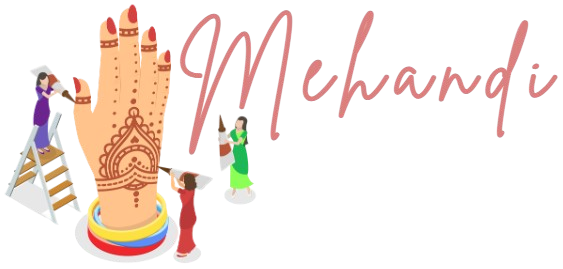Mehandi is more than just temporary body art—it’s a celebration of culture, style, and self‑expression. Whether you’re a bride-to-be or simply want to accentuate your look for a festive gathering, the right mehandi designs can transform your hands and feet into a canvas of beauty. In this guide, we’ll cover everything from basic mehandi design tips to intricate mehandi dulhan patterns, and show you how to balance front hand mehandi, back mehandi, and even legs mehandi design.

Why Mehandi Designs Matter
Enhance Your Appearance: From Simple Mehandi Designs to Elegant Mehandi Dulhan Designs
Mehandi is a celebration of culture, fashion, and individuality that goes beyond transient body art. The correct mehandi designs may turn your hands and feet into a work of art, whether you’re getting married or just want to add some flair to your ensemble for a fun event. We’ll go over everything in this tutorial, from simple mehandi design advice to complex mehandi dulhan patterns. We’ll also demonstrate how to balance front hand, rear, and even leg mehandi designs.

1. The Significance of Mehandi Designs
Mehandi has represented happiness, luck, and love for millennia. Artists of today make mehandi designs that fit every personality by fusing tradition with modern flair. There is a style for every event, ranging from full-bodied bridal masterpieces to simple dots and vines.
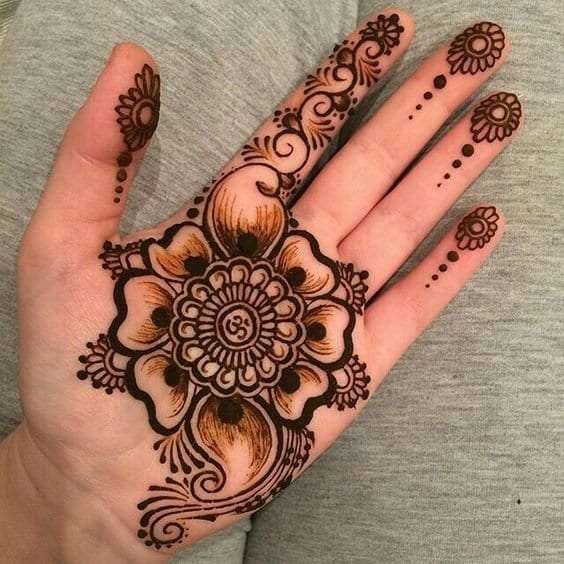
2. Getting Started: Simple Mehandi Designs
Try a simple mehandi design if you’re new to henna art. These designs are ideal for informal gatherings because they require little expertise and can be finished in less than 20 minutes.
Table 1: Components of aPattern
Element Description: Dots and Lines Application TimeFive to seven minutes of tiny dot clusters joined by lines
A single motif of flowersThe hand’s back has one flower.8–10 minutes
Tips of the FingersThree to five minutes for each finger’s solid or outlined tips
Bracelet for the wristFive minutes of a basic wrist loop chain
Gaining proficiency in these components gives you the confidence to try more complex mehandi patterns.
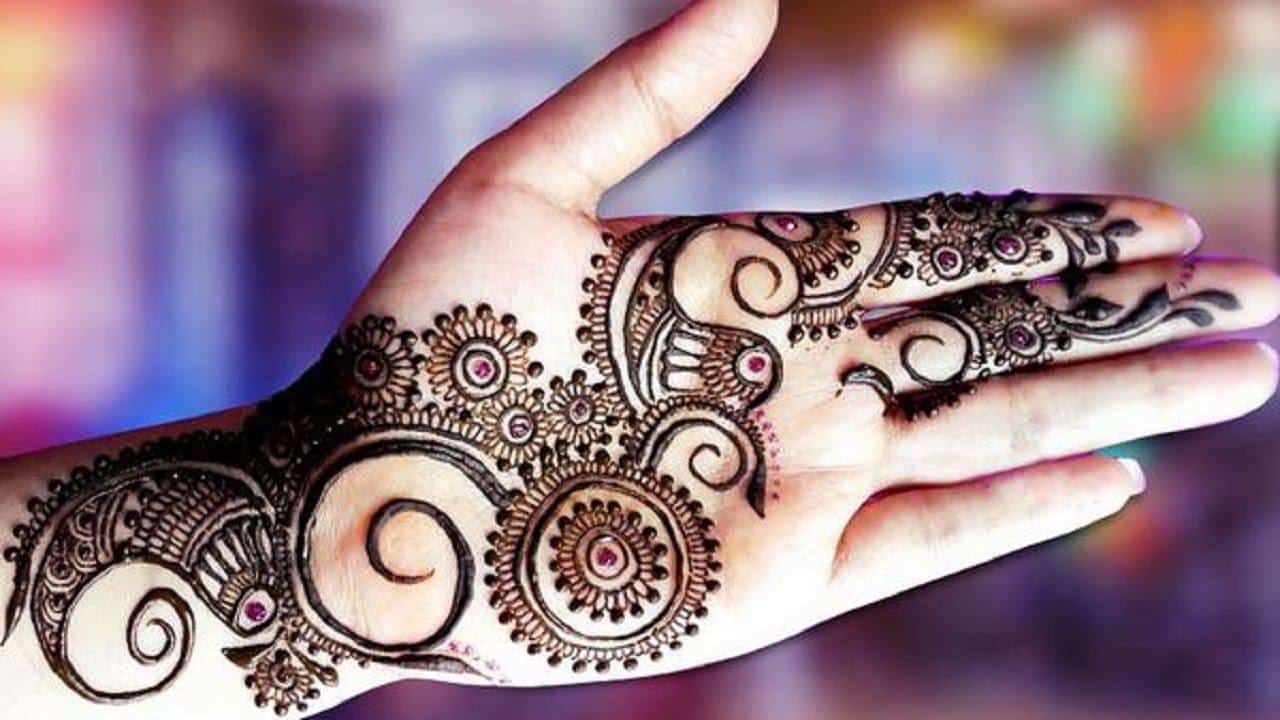
3. First Impressions Matter: Front Hand Mehandi
Since people frequently notice your palms and the tops of your hands first, many artists concentrate their most intricate mehandi work on the front of your hands.
• Central Mandala: A round design in the palm’s middle.
Elegant teardrop forms that extend toward the fingers are known as “Paisley Trails.”
• Name Embedding: A defining feature of mehandi dulhan style, brides frequently conceal their initials in the design.
Any ensemble, from bridal lehengas to casual kurtas, is instantly enhanced by a skillfully done front-hand mehandi.
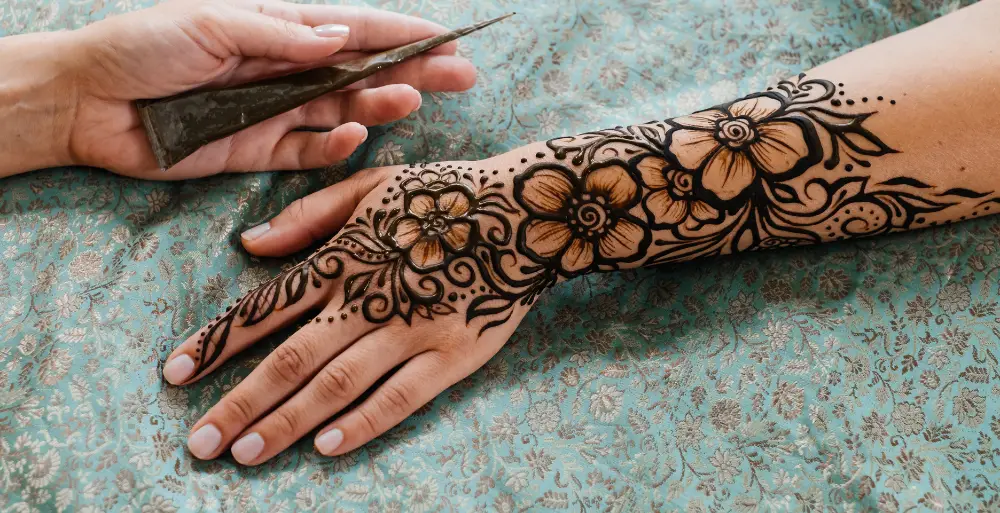
4. Back Mehandi: Airy and Elegant
The back of the hand requires lighter, more flowing designs, whereas the palm can accommodate thicker patterns. Back mehandi frequently includes:
• Vine Trails: Long, thin vines that extend from the wrist to the knuckles.
• Flower Clusters: Tiny clusters of flowers encircling the knuckles.
• Negative Space: Intentional voids that allow the design to “breathe.”
A lively, well-balanced appearance is produced by the contrast between the airy back mehandi and the thick front designs.

5. Beyond Hands: Legs Mehandi Design
Don’t stop with your hands; mehandi designs for legs have grown in popularity, particularly for weddings and other festive occasions. Typical leg patterns consist of:
• Ankle Motifs: Jewelry-like circular rings around the ankle.
• Toe Trails: Tiny flowers and dots that extend up the foot from the toes.
• Calf Vines: Tiny vines that resemble botanical tattoos encircle the calf.
Table 2: Mehandi Feature Comparison of Hand and LegLegs Mehandi Design Visibility Hand MehandiExtremely high, moderate to high density of patternsable to be extremely denseIn general, lighter
Time Spent Applying: 20–60 minutes 30–90 minutes
Ideal for festivals and weddingsWedding photos and mehndi events
Your complete attire will be picture-perfect and coordinated if you incorporate the legs mehandi design.
6. Mehandi Dulhan: Masterworks of Bridal
Mehandi, or mehandi dulhan, is an art of devotion for the bride. Both hands and feet are frequently covered in bridal motifs with:
• Complete hand coverage, encompassing the forearms and fingertips.
• Detailed Themes: palaces, mandalas, peacocks, and more.
• Personalized Elements: names, portraits, and symbols that hold special value for the couple.
Two painters frequently collaborate to create a proper mehandi dulhan design, which can take three to six hours to finish.
7. Do-it-yourself Advice for Perfect Application
These pointers will help you attain salon-caliber results even if you’re not a professional:
1. Prepare the Skin: To get rid of oils, wash and exfoliate.
2. Quality Cone: For clean lines, use cones with a fine tip that are new.
3. Steady Hand: For stability, place your elbow on a table.
4. Aftercare: Use a lemon-sugar mixture to seal the paste when it has completely dried.
5. Remove Gently: Scrape off; to make the stain deeper, stay out of the water for at least six hours.
These procedures guarantee that your intricate mehandi dulhan patterns or simple mehandi designs darken exquisitely.
8. Blending Styles: Personalized Designs

Combine components to create a distinctive style:
• Using a basic wrist bracelet from your arsenal of mehandi designs, pair a front-hand mehandi mandala.
• To frame a floral design on the palm, add a vine from your rear mehandi.
• For a cohesive look, extend a small legs mehandi design anklet pattern into toe trails.
You can create customized mehandi designs that express your style and the event by combining different techniques.

Ehandi
To maintain a deep and durable stain:
• Stay away from water for the first six to eight hours.
• Natural Oils: After scraping, use mustard or coconut oil.
• No Exfoliation: Avoid leaving the design area in scrubs.
• Protect Clothes: Avoid touching materials until the paste has completely dried.
Any simple mehandi pattern can become a durable piece of art with the right maintenance.
10. Concluding remarks
The world of henna offers endless inventiveness, ranging from basic mehandi design elements to intricate mehandi dulhan masterpieces. Whether you’re interested in mehandi designs with bold legs, delicate backs, or front hands, each style reflects culture, celebration, and individuality.
So grab that cone, experiment with different designs, and let your feet and hands glow with gorgeous mehandi patterns!
Over centuries, mehandi has symbolized joy, good fortune, and love. Today’s artists blend tradition with contemporary flair to create mehandi designs that suit every personality. From minimalist dots and vines to full‑hand bridal masterpieces, there’s a style for every occasion.

-
Starting Simple:
If you’re new to henna art, begin with a basic mehandi design. These designs require minimal skill and can be completed in under 20 minutes, making them perfect for casual events.
Table 1: Elements of a Basic Mehandi Design
| Element | Description | Time to Apply |
| Dots & Lines | Small clusters of dots connected by lines | 5–7 minutes |
| Single Floral Motif | One flower on the back of the hand | 8–10 minutes |
| Finger Tips | Solid or outlined tips on each finger | 3–5 minutes |
| Wrist Bracelet | Simple chain of loops around the wrist | 5 minutes |
Mastering these elements builds confidence to move on to more elaborate mehandi designs.

-
Front Hand Mehandi: First Impressions Count
Your palms and the top of your hands are often the first thing people see, so front hand mehandi is where many artists focus their most detailed work.
- Central Mandala: A circular motif in the center of the palm.
- Paisley Trails: Elegant teardrop shapes extending toward the fingers.
- Name Embedding: Brides often hide initials in the pattern—a hallmark of mehandi dulhan style.
A well‑executed front hand mehandi instantly elevates any outfit, from casual kurtas to bridal lehengas.

- Back Mehandi: Graceful and Airy
While the palm can handle dense patterns, the back of the hand calls for lighter, more flowing designs. Back mehandi often features:
- Vine Trails: Long, slender vines from wrist to knuckles.
- Floral Clusters: Small groups of flowers around the knuckles.
- Negative Space: Deliberate gaps that give the design “breathing room.”
This contrast between dense front designs and airy back mehandi creates a dynamic, balanced look.
- Legs Mehandi Design: Beyond Hands
Don’t limit yourself to hands—legs mehandi design has become a striking trend, especially for brides and festive events. Common leg patterns include:
- Anklet Motifs: Circular bands around the ankle, resembling jewelry.
- Toe Trails: Small flowers and dots leading from toes up the foot.
- Calf Vines: Delicate vines wrapping around the calf like botanical tattoos
-

Table 2: Comparing Hand vs. Leg Mehandi
| Feature | Hand Mehandi | Legs Mehandi Design |
| Visibility | Very high | Moderate to high |
| Pattern Density | Can be very dense | Generally lighter |
| Application Time | 20–60 minutes | 30–90 minutes |
| Best for | Weddings, festivals | Bridal shoots, mehndi parties |
Integrating legs mehandi design ensures your entire ensemble is cohesive and picture‑perfect.

-
Mehandi Dulhan: Bridal Masterpieces
For the bride, or mehandi dulhan, mehandi is an art of devotion. Bridal patterns often cover both hands and feet with:
- Full‑hand Coverage: From fingertips to forearms.
- Intricate Motifs: Peacocks, mandalas, palaces, and more.
- Personalized Elements: Portraits, names, and symbols meaningful to the couple.
A true mehandi dulhan design can take 3–6 hours to complete and often involves two artists working in tandem.
-
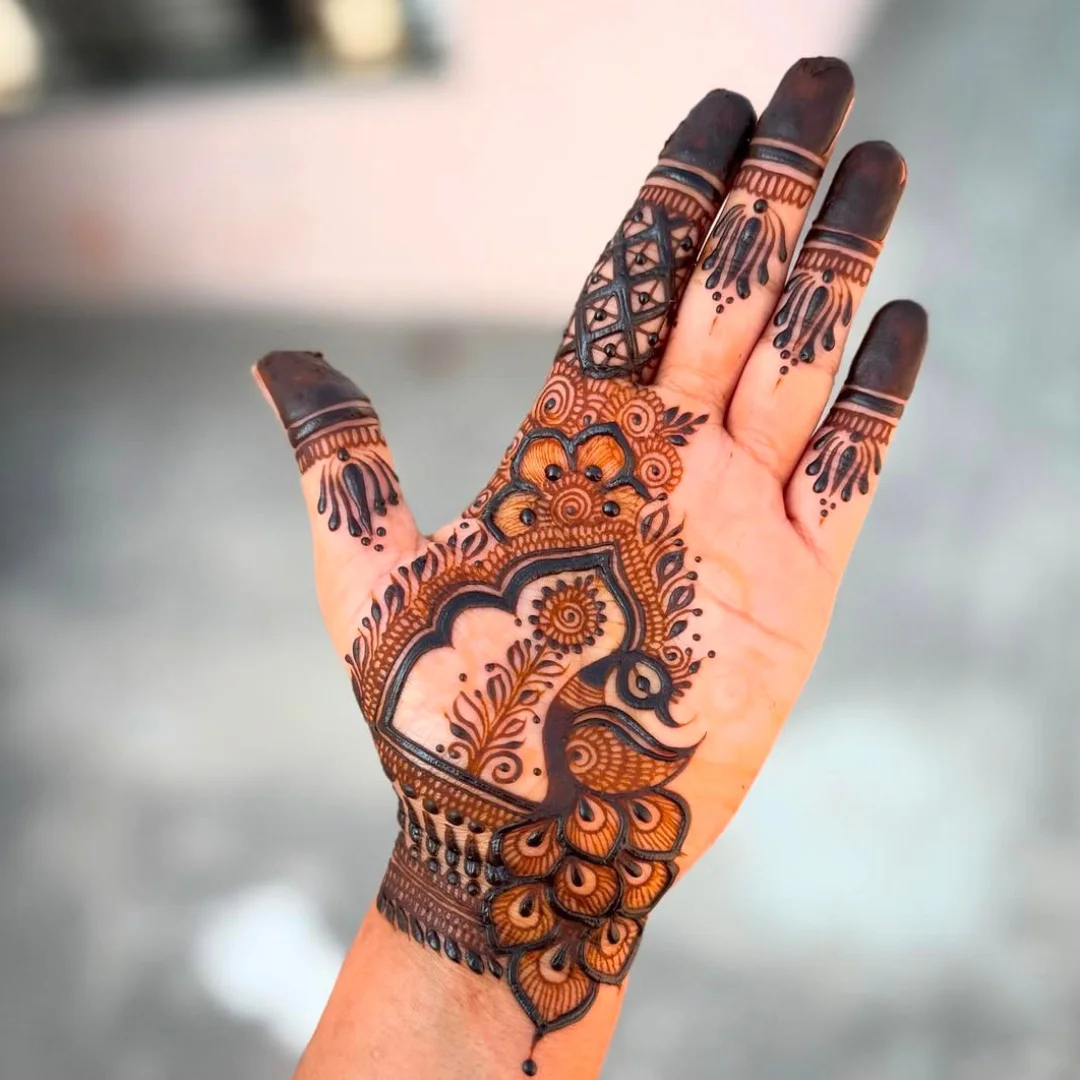 DIY Tips for Flawless Application
DIY Tips for Flawless Application
Even if you’re not a professional, these tips help you achieve salon‑quality results:
- Prep the Skin: Wash and exfoliate to remove oils.
- Quality Cone: Use fresh, fine‑tipped cones for crisp lines.
- Steady Hand: Rest your elbow on a table for stability.
- Aftercare: Let the paste dry fully, then seal with a lemon‑sugar mix.
- Remove Gently: Scrape off; avoid water for at least 6 hours to deepen the stain.
These steps ensure your basic mehandi design or elaborate mehandi dulhan patterns darken beautifully.
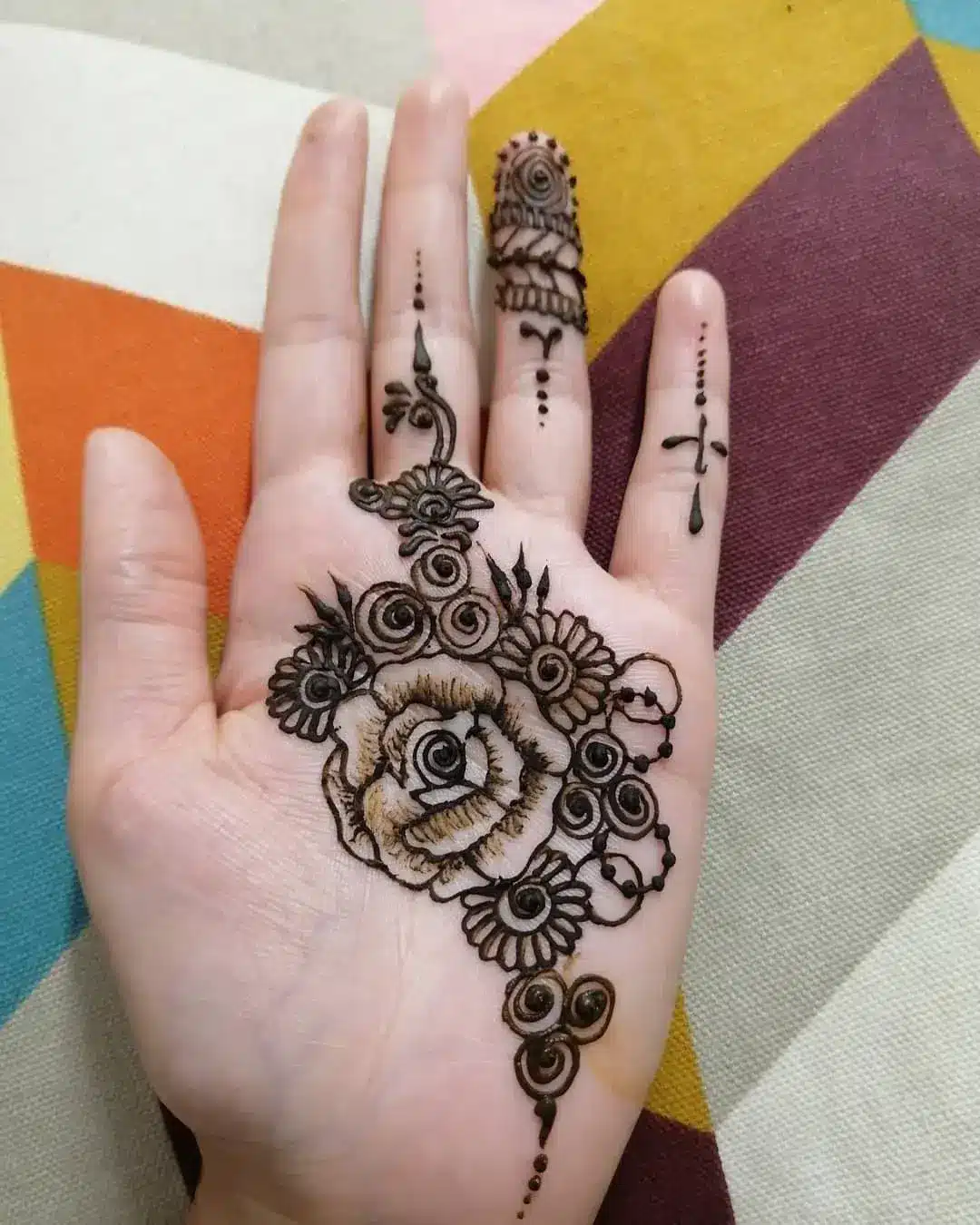
-
Combining Styles: Custom Creations
Mix and match elements to create a signature look:
- Pair a front hand mehandi mandala with a simple wrist bracelet from your basic mehandi design repertoire.
- Add a vine from your back mehandi to frame a floral motif on the palm.
- Extend a small legs mehandi design anklet pattern into toe trails for a unified style.
By blending techniques, you can craft personalized mehandi designs that reflect your taste and occasion.

Ehandi
To keep your stain rich and long‑lasting:
- Avoid Water: For the first 6–8 hours.
- Natural Oils: Apply coconut or mustard oil after scraping.
- No Exfoliation: Steer clear of scrubs on the design area.
- Protect Clothing: Let the paste dry fully before touching fabrics.
Proper care transforms any basic mehandi design into a lasting work of art.
-
Final Thoughts
From simple basic mehandi design elements to full‑scale mehandi dulhan masterpieces, the world of henna offers limitless creativity. Whether you focus on front hand mehandi, delicate back mehandi, or bold legs mehandi design, each style tells a story of culture, celebration, and personal expression.
So pick up that cone, explore new patterns, and let your hands and feet shine with beautiful mehandi designs!
